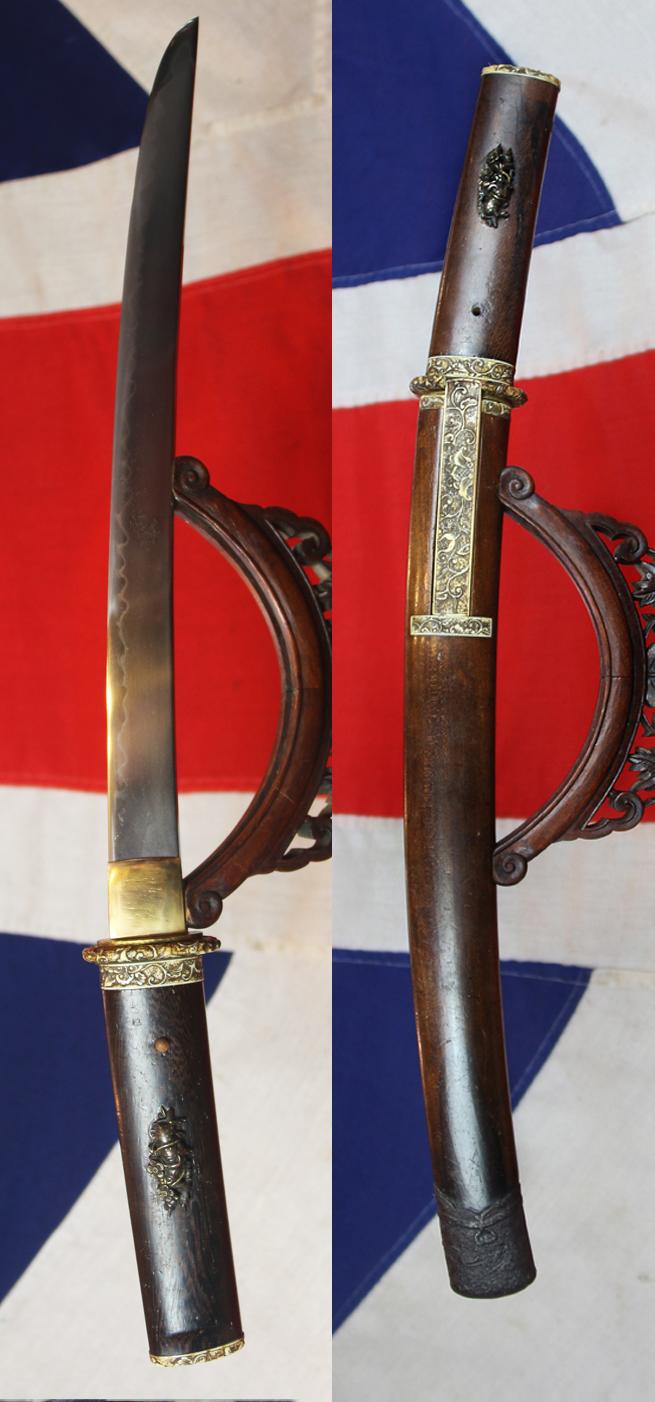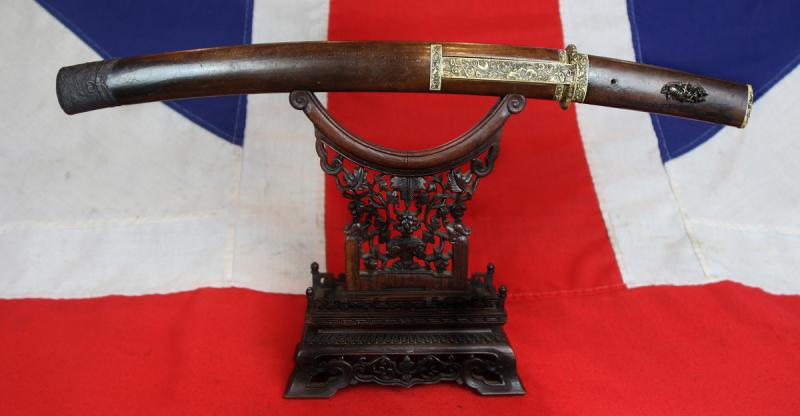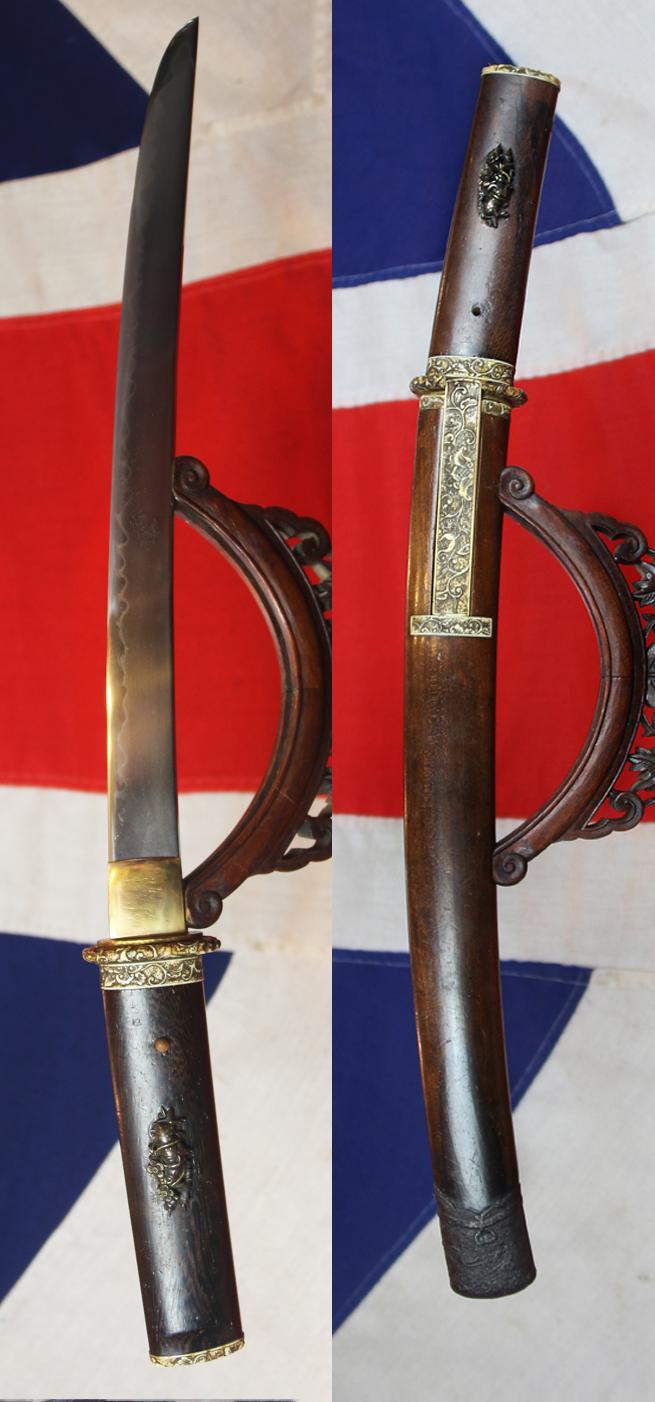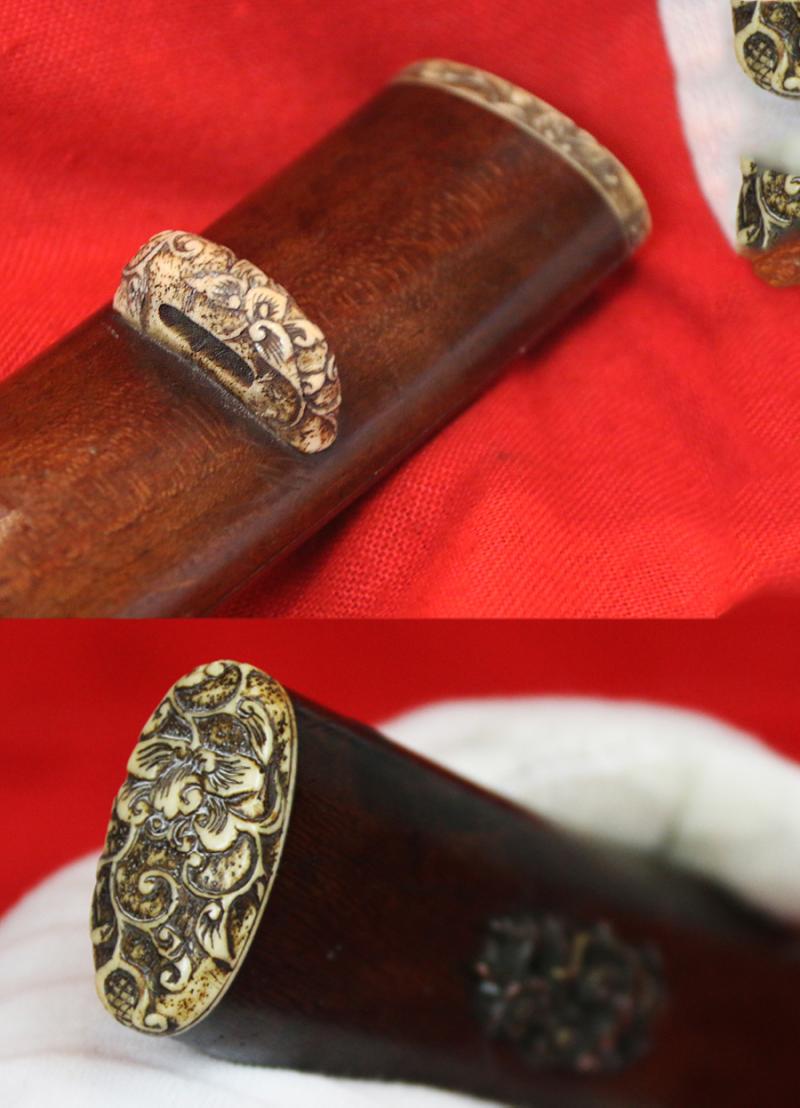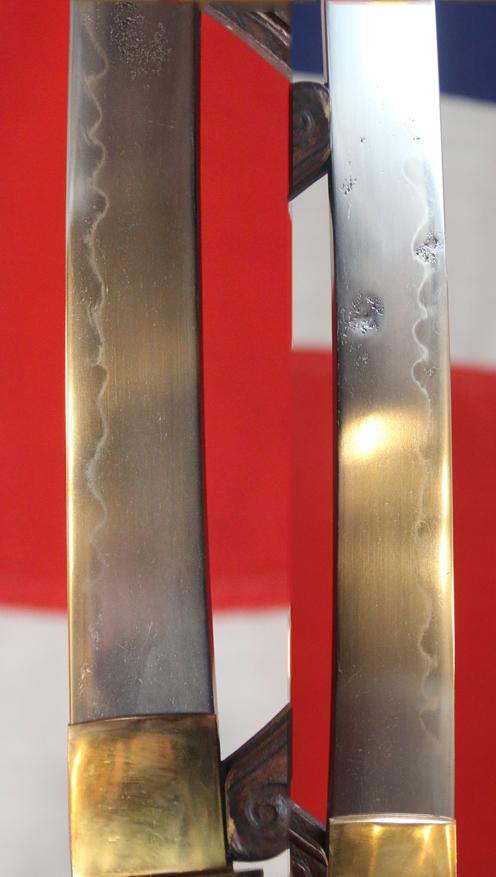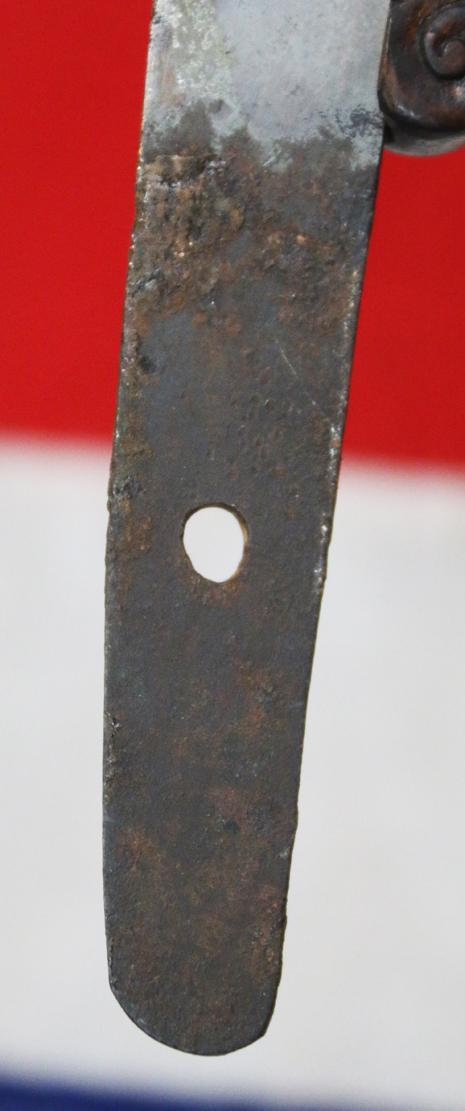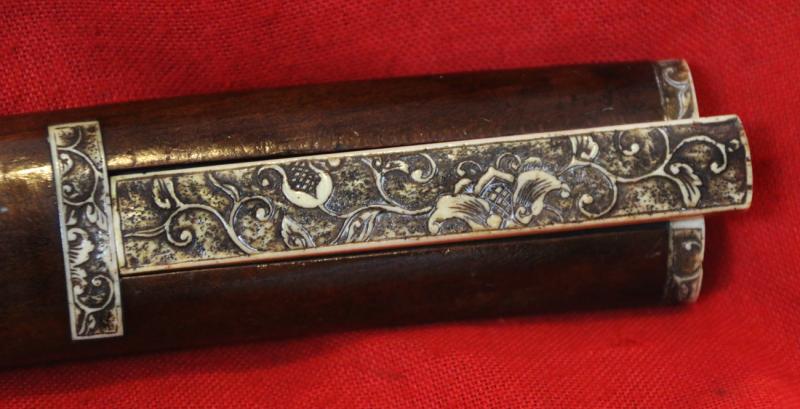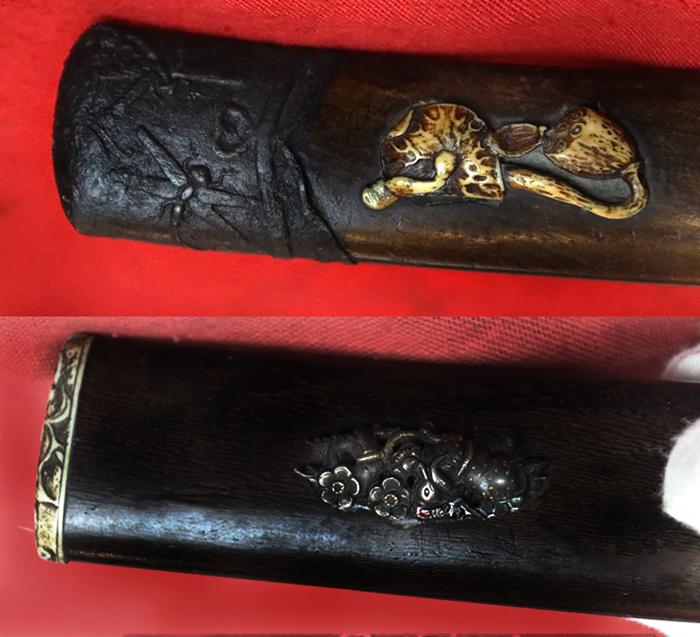A Most Beautiful Ancient Bladed Tanto, Around 650 -700 Years Old In Hon-zukuri Form, in Stunning Carved Wood and Carved Stag Antler Original Edo Mounts
Blade from the Kamakura 1192-1336 to Nambokochu period 1333 to 1391, The undulating hamon looks spectacular,
Sukide-Bori Mino school style reticulated carved staghorn suite of mounts including the fuchi kashira, tsuba, kozuka, kurigata, koiguchi, and a Higo school sayajri of an embossed dragonfly. two intriguing menuki on the tsuka of takebori water buffalo wrestling a serpent beneath a prunus bush. the buffalo have inlaid silver dots.
The tanto was invented partway through the Heian period, when it was mainly used as a weapon. With the beginning of the Kamakura period, tanto were forged to be more aesthetically pleasing, and hira and uchi-sori tanto were the most popular styles for wars in the kamakura period. Near the middle of the Kamakura period, more tanto artisans were seen, increasing the abundance of the weapon, and the kanmuri-otoshi style became prevalent in the cities of Kyoto and Yamato. Because of the style introduced by the tachi in the late Kamakura period, tanto began to be forged longer and wider. The introduction of the Hachiman faith became visible in the carvings in the tanto hilts around this time. The hamon (line of temper) is similar to that of the tachi, except for the absence of choji-midare, which is nioi and utsuri. Gunomi-midare and suguha are found to have taken its place. In Nambokucho, the tanto were forged to be up to forty centimetres as opposed to the normal one shaku (about thirty centimetres) length. The tanto blades became thinner between the uri and the omote, and wider between the ha and mune. At this point in time, two styles of hamon were prevalent: the older style, which was subtle and artistic, and the newer, more popular style. Blades could be of exceptional quality. As the end of the period neared, the average blade narrowed and the sori became shallow.
The blade has a superb and most beautiful and active hamon with few surface aging areas, but just as one must expect with a blade of such great age.
Code: 24345

